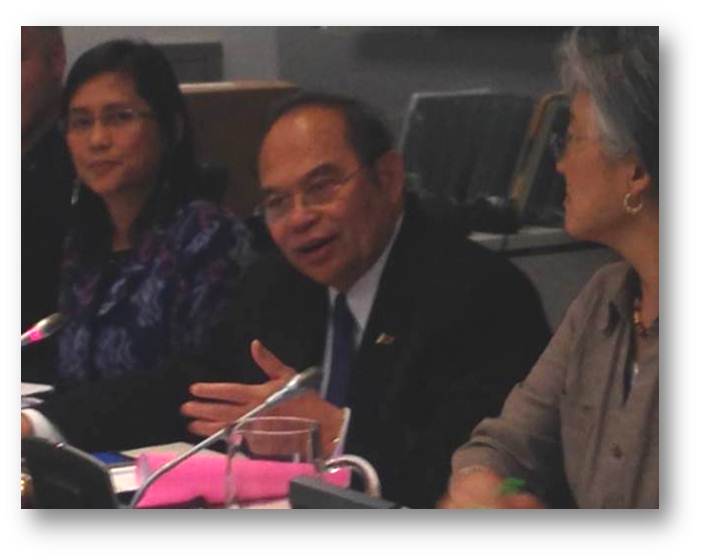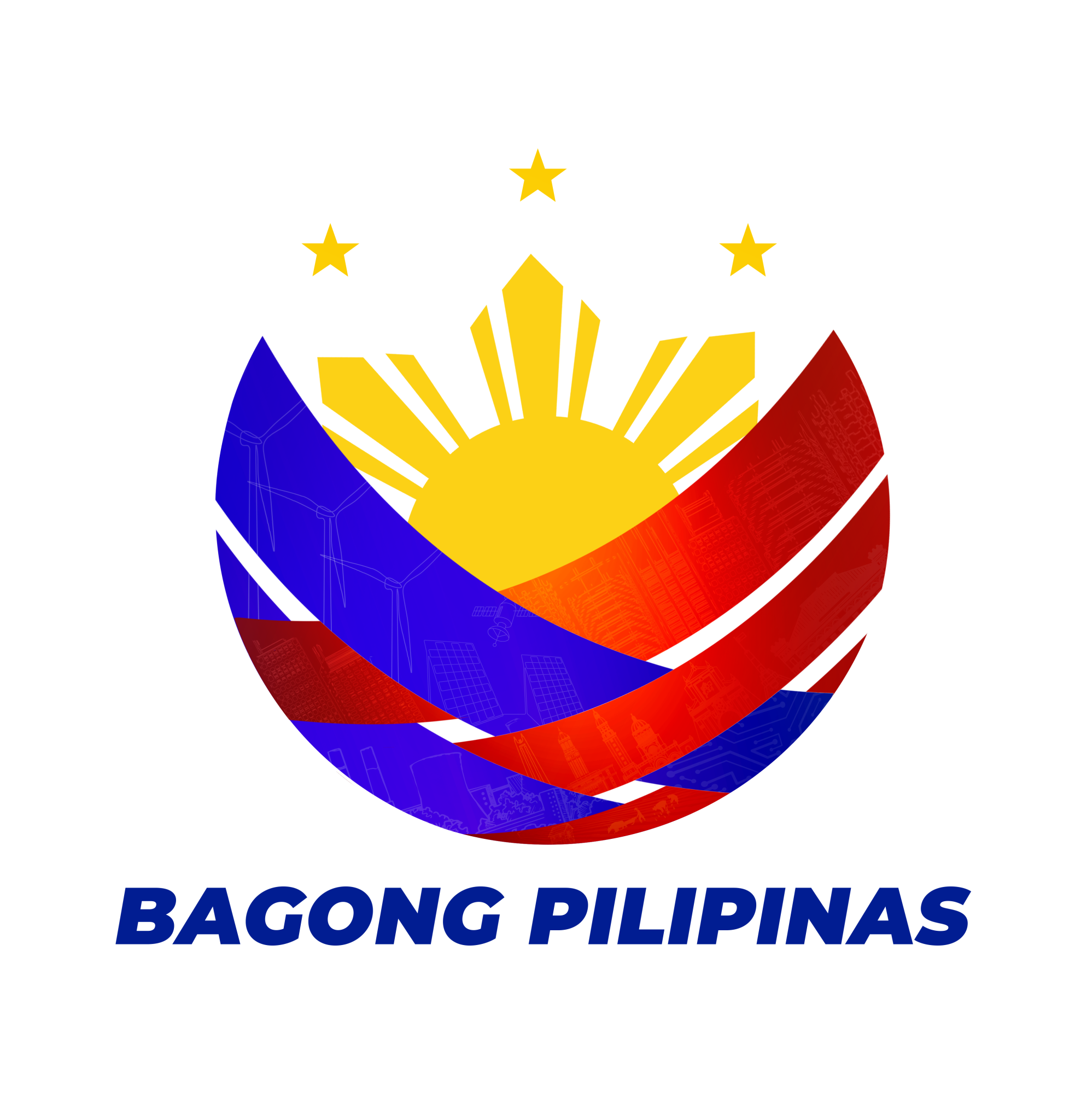
02 July 2014 - The Philippines had a productive day on June 24 as it co-sponsored three side events under the United Nations Economic and Social Council (ECOSOC) Humanitarian Affairs Segment which highlighted the country’s experience and lessons learned from typhoon Haiyan/Yolanda and other recent disasters. The three-day Segment was held under the theme “The future of humanitarian affairs: towards greater inclusiveness, coordination, interoperability and effectiveness.”
Partnerships in humanitarian response
The first event of the day, bearing the theme “The role of partnerships in humanitarian response: lessons learned from typhoon Haiyan,” featured two Filipino panelists, namely President of the Philippine Disaster Recovery Foundation (PDRF) President Butch Meily and Ms. Nanette Salvador-Antequisa, Executive Director of a Mindanao-based non-governmental organization (NGO) called EcoWeb. It was moderated by United Nations (UN) Assistant Secretary-General for Humanitarian Affairs Kyung-wha Kang.
In his opening remarks as chair of the event, Philippine Permanent Representative to the UN, Ambassador Libran N. Cabactulan, cited the important partnerships that the country has established through the national cluster system which helped develop a more cohesive response after Haiyan struck.
Ambassador Cabactulan took the opportunity to thank both the private sector and civil society for assisting the national government’s response, and for the financial support amounting to nearly US$129 million, to cover the immediate needs of the affected population under the humanitarian community’s Strategic Response Plan.
Mr. Meily noted that the PDRF is the first of its kind in the world, and pointed out the changing role of private sector in the Philippines during time of crisis.
Meanwhile, Ms. Antequisa drew attention to the challenges faced by community-based NGOs in responding to Haiyan and appealed for greater support from international NGOs and the UN system.
Another panelist, Dr. Randolph C. Kent, a Visiting Senior Research Fellow at King’s College, London and former UN Humanitarian Coordinator, said he was impressed by the Philippine example, particularly its partnership with the private sector.
Civil-Military Coordination
The second event on “Humanitarian civil-military coordination in a natural disaster setting: best practices from a recent operation”, featured Col. Orland Suarez, Assistant Defense Attaché at the Philippine Embassy in Washington, D.C. and Ms. Victoria Kellett, Deputy Director of the Humanitarian Affairs and Disaster Response Division of Canada’s Department of Foreign Affairs, Trade and Development.
Ms. Kellet informed the audience of the best practices demonstrated by Canada’s military response to Haiyan. On transparency, she said civilian liaison officers were embedded in its Disaster Assistance Response Team (DART), a rapidly deployable unit of Canada’s armed forces, during the operation which was concentrated in Panay island. She also mentioned the usefulness of including in DART a number of Canadian troops of Filipino descent who understand the affected communities.
Citing the limited resources of the Armed Forces of the Philippines (AFP), Col. Suarez expressed gratitude to Canada and the other 26 countries which provided military contingents during its operation in areas devastated by Haiyan. He likewise stressed the importance of a mindset that is prepared for a worst-case scenario, a seamless multilateral response, equal sharing of responsibility with civilian organizations, and timely declaration of state of national calamity as some of the valuable lessons learned by AFP from this disaster.
Displacement of people
The third event of the day was held under the theme “People displaced by conflicts and disasters: Improving principled delivery of aid” with Ambassador Cabactulan as one of the invited panelists.
Ambassador Cabactulan underscored the importance of preparedness or effective adaptation measures to cushion the incidence of internal displacement of people (IDP) during a disaster. He referred to the Department of Social Welfare and Development’s efforts to construct safer evacuation centers, arrange logistics and warehousing agreement with the private sector, and develop surge capacity teams and alternative communication systems as some of the ways to better prepare the country for future calamity.
Recalling the people’s lack of understanding of the term “storm surge” before Haiyan struck, he added that promoting disaster risk management education has now become a priority area.
On the “no-build zones” initially proposed after Haiyan, Ambassador Cabactulan informed the audience that the government is carefully studying alternative options to avoid forced displacement of people in the affected areas.
Turning to IDPs in Mindanao, particularly in Zamboanga City which was attacked last year by rebels from the Moro National Liberation Front, Ambassador Cabactulan said the government is addressing the sensitivities and special needs of the affected people, like the Badjaos, who prefer to stay by the shore as their natural habitat.
As part of the holistic approach to build peace and foster development in Mindanao, he briefed the participants of the recent signing of the Comprehensive Agreement on the Bangsamoro between the Philippine Government and the Moro Islamic Liberation Front.
Finally, he announced that the government is currently working on a bill that would provide comprehensive protection to IDPs. If this bill is enacted into law, the Philippines will become the first Asia-Pacific country to have legislation that protects the rights of IDPs in accordance with international norms, particularly the UN Guiding Principles on Internal Displacement.
Co-sponsoring these events with the Philippines were UN Office of the Coordination for Humanitarian Affairs (OCHA), Oxfam, Actionaid, Catholic Agency for Overseas Development (CAFOD), Christian Aid, Tearfund, Canada, Norway, and the International Federation of the Red Cross and Red Crescent Societies.
Since 1998, the Humanitarian Affairs Segment has served as a platform for Member States to address activities and issues related to strengthening the coordination of the humanitarian assistance of the United Nations. END

